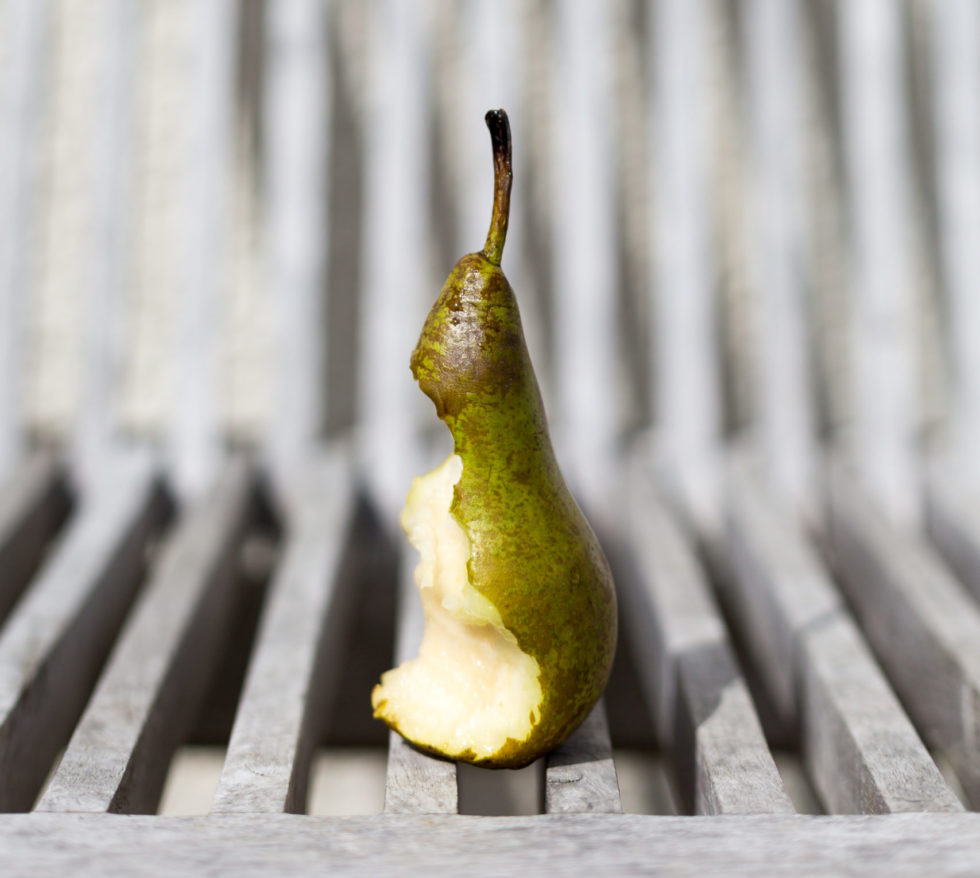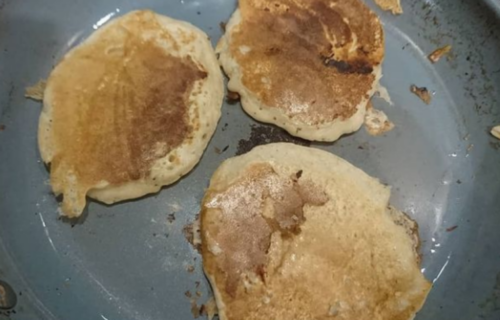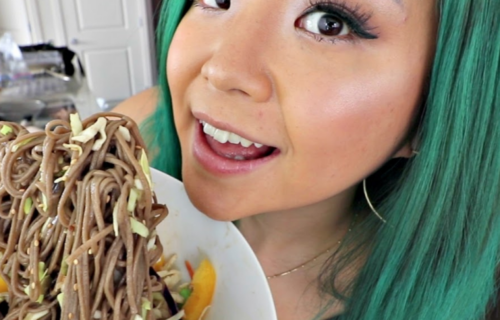
Top tips to reduce food waste with kids
There is a lot you can do to reduce food waste. It can be tricky to get the other members of your family on board sometimes though. Especially when trying to reduce food waste with kids!
This blog post contains affiliate links marked with * and anything you buy through them will help to support the blog as I will get a small commission. All opinions are my own and it won’t cost you anything extra to use the links. Thanks!
They might take a bite out of an apple and then decide they don’t want the rest. Or ask for their favourite dinner, only to say they aren’t feeling that hungry when it gets to dinner time. Sometimes kids want to pour out their own breakfast cereal and milk. The problem is that they might overfill the bowl and only make it through half of it. So what can you do about these problems? Here are my top 10 tips for reducing food waste when it comes to kids!
Top tips to reduce food waste when you have children!
Breakfast
Do you make breakfast for your kids or do you let them serve themselves? Either way it can end in half a bowl of cereal being left untouched.
Appetites can vary wildly between kids. Even the same child will want different amounts at times. It will change depending on how hungry they are or if they going through a growth spurt!
So it can be difficult to get the amount of breakfast to serve just right. What can you do about this?
- Serve a little at a time. They can always have more
- Put leftovers in the fridge to eat later or the next day.
- Depending on what they had for breakfast, sometimes you can use it as an ingredient for another recipe! E.g. you can make all kinds of things with leftover porridge including these leftover porridge pancakes . For cereal that would be a bit soggy the next day e.g. rice pops: blend it up and mix it with some fruit to make it into a milkshake.
Packed lunches
As with breakfast, there is no way you can be sure that the lunch you send your kids off with for the day will be eaten.
What you can do is to keep adjusting. If you find they are coming home with waste every day, send them with less. You could also try different foods.
Put their lunch in an insulated lunch bag with an ice pack. If leftovers are kept cool all day they can be put in the fridge for another time.
Food gets bashed around, squished and crushed in a bag. If you put it in boxes and containers, then it will last better.
Main meals
They promised you that they would make it through at least 15 fish fingers and a giant plate of chips and peas. It turns out that two fish fingers was what they really wanted and there were a few too many chips and peas.
What can you do with the leftover fish fingers, chips and peas?
- Fish fingers: Fish finger sandwiches the next day.
- Chips: Twice cooked chips can be yummy, so you could re- cook them the next day. Or alternatively use them in a frittata .
- Peas – they actually make quite a nice sandwich too! Or you could use them to make a pea mint chilli dip.
What about other meals?
- Pasta, noodles and couscous- these all make a great base for a cold salad for lunch the next day
- Leftover potatoes. Baked, boiled, mashed or roasted potatoes can be frozen to be used again another time! Cold boiled potatoes are the perfect base for a potato salad and patatas bravas (instead of cooking the potatoes from scratch, just reheat them). Mash is another good way to use up potatoes. Or chop into cubes and use in a frittata .
- Leftover cooked veg – freeze to use another time or combine with potatoes. You can make veg mash or depending on the veg something like bubble and squeak *Ad*
- Rice – if you have too much rice you have to be careful to cool it down quickly after cooking and then putting in the fridge or freezer straight away. If you don’t cool your rice quickly enough you risk food poisoning. Read more on how to reuse leftover rice safely here: can reheating rice cause food poisoning?
- Curries, stews, stir fries, pasta/ rice and noodle toppings. Put them in a container in the fridge. Use as a sandwich filler, add to pies or make into a soup.
- Leftover meat and fish. Cold meat and fish can be used as sandwich fillings, or freeze for another time. As long as it hasn’t been frozen after being cooked before.
- Baked beans – if you have cold baked beans in a tin that haven’t been used, there are lots of recipes to use them up. The simplest thing is to put them in a container in the fridge to use another day. If they have been cooked once though I wouldn’t reheat them again. Unless you made them yourself from scratch. You could mash them use as a sandwich spread or use them as the base to make a cold bean dip.
- Leftover pizza – re-fridgerate and eat cold the next day!
Freezing and reheating rules
If freezing and reheating food follow these rules to make sure it is safe:
- Make sure the food has fully cooled down before putting it in your fridge or freezer. This is because it can raise the temperature of your fridge/ freezer and warm everything else up in it.
- Make sure food is only frozen and heated/ re-heated raw once and cooked once. E.g. you could freeze some raw meat, then defrost it and cook it, then freeze it and then defrost it and it cook it again. But you can’t reheat or freeze it again after that. You also can’t add any extra steps e.g. don’t freeze raw meat again after being defrosted and before cooking.
- When reheating food, make sure it is piping hot all the way through before serving. If you use a microwave, take it out half way through reheating and give it a good stir.
Snacks
What to do if your kids want to snack all the time
There are various reasons why snacks might be a problem with kids. Too much snacking may lead to food waste. This is because they may be less hungry for their meals and are more likely to leave food on the plate. It’s also because they might be eating just for the sake of it, rather than because they are hungry.
The 3 R’s can really help put you and them back in control of snack times. You can pick and choose which one you want to do or you can do a combination of two or three. In short,
- Routine: Set routine snack times
- Ration: Allocate the exact snacks that can be eaten each day
- Rules: Set rules over which types of food can be eaten and when.
I think these R’s help kids to know where they stand, what is and isn’t allowed and means that once they get used to it, they are much less likely to nag about snacks! Read more about the 3 R’s here: Reduce snacking by following the 3 R’s
What to do with half eaten or bruised and bashed snacks
Another problem with snacks, is that sometimes they can get opened, but not finished. Or a bite taken out of but not fully eaten. Sometimes snacks can be bashed about at the bottom of a bag, where they can get bruised, squashed or crushed.
What can you do about this? If you are taking food out and about with you, try to keep it in containers that will protect it from getting squashed. Some foods get squashed easier than others e.g. bananas, so they are better eaten at home, rather than taken out with you. Here are some tips for what to do with problem snack foods:
Apples
I find there are generally two ways that apples can go to waste with kids. The first is that they take a bite and then decide they don’t want the rest. The second is that they or you take an apple as a snack to eat while out and about or at school and it doesn’t get eaten. Then it comes home having been bashed about.
What can you do with an apple that has had one bite out of it?
If your child has taken a bite out of an apple and doesn’t want to eat the rest, you could just eat it or save it for later.
Another alternative, for a kid who would refuse to eat the rest of the bitten apple later, is to chop off the bit that has been bitten. Wash the apple, then core and slice it. Now it is a snack that anyone can eat! You can even put it in a tupperware type container to save for later.
What can you do with bashed apples?
Bashed apples don’t look very appealing to eat raw, but they cook just fine. I collect bashed apples in my fridge to turn into desserts like apple crumble!
Want some more ideas for how to use up apples? Check out this list here: 22 ways to use up apples .
Open packets
Let’s say your child eats half a packet of breadsticks, a bit of a cereal bar, or half a pot of yoghurt. What can you do to reduce food waste for kids in this area?
- Use food clips to reseal packets. I also carry these around with me, if I take food out that might need a clip. I generally try to buy bigger packets of things rather than individual portions, to reduce the amount of packaging overall.
- Decant opened food into tupperware style containers
- Put a clingfilm alternative over the top of the pot of yoghurt to use another time. Again you can reduce packaging waste by buying bigger tubs of yoghurt and dishing up a bit at a time. This way the leftover yoghurt can go into a container with a lid to be used another time.
What can you do with bashed and broken dried snacks?
Savoury:
I used to carry oat cakes around with me as an easy on the go snack and they come in little plastic packets (not ideal I know). The problem I had was that they would turn into crumbs in the packet after a while. I worked out that the crumbs were a perfect substitute for breadcrumbs when making meatballs. This would work well in plant based meatball alternatives too though.
For more ideas to use up crushed crackers, check out these 20 ways to stop wasting bread for the breadcrumb ideas. Substitute the breadcrumbs with the crackers. Grind the crackers finely enough and they can be used as a type of flour substitute too.
Tip: If you want to take crackers out but don’t want them to get crushed, get small containers in the right shape for your crackers.
Sweet:
If you have a broken packet of biscuits or cake crumbs then check out these ideas to use them up: ways to use up sweet crumbs. Ideas include adding them to yogurts and using them to make cheesecake bases.
So there you have it – some ideas to get you started with reducing food waste when it comes to kids!
Taking it further
Educate your kids about the problems with food waste e.g. food waste gives off methane in landfill which is a greenhouse gas and it is a waste of money. They will grow up knowing that food shouldn’t be wasted where possible.
Go easy on yourself and don’t eat leftovers if you aren’t hungry
Go easy on yourself and them. Despite all your best efforts, it is likely food will still be wasted. Keep giving your children new foods to try, even if you don’t think they will eat it. This is because kids need to see a new food lots of times before trying it. Just give them a little of it at a time.
Don’t stress out if you feed them what was their favourite meal last week and they refuse to eat it, because they hate it this week. These things happen!
The best thing to do with a food that is unsafe to be reused, is to put it in the compost. Do this if for example if they have half eaten a food and they have a bug. Or if the food has been left out of the fridge for too long.
Finally don’t feel like you have to eat their leftovers if you aren’t hungry. It is just as much as a waste as if it went in the bin, because you ate food that you didn’t need.
I hope these tips were helpful. Have I missed something off this list? Get in touch and let me know what your top tips for reducing food waste with kids are!





